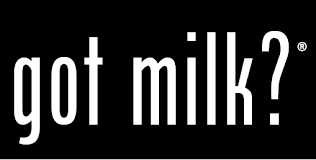How Romanticizing English Is Killing Your Marketing Message – And What You Can Do About It

I live in Italy and work in various marketing contexts with Italian companies. Italy is home to beautiful art, architecture, cuisine and of course the Italian language. Being a Latin-based language, Italian is considered a romance language. But, how do we translate the “romance” into English when marketing to countries abroad? I will use the “Italian vs. English debate” to illustrate…
Perhaps you’ve seen it – beautiful Italian prose literally translated into the not-so-exciting “een-glay-zay”. The result isn’t exactly romantic, or possibly even worth reading. Part of what I do is to act as an intermediary between the languages. The most important aspect of converting a Latin language into English is to avoid literal translation. Both languages have a lot of sayings that don’t lend themselves to translation. So it is best to “translate context”. Words are exactly that…words. But you can make a winning message when you create the same meaning, but as they say it in a mother-tongue way.
I’ll never forget the first time I stepped in to help a student with something he had written. He was excited about a trip he was to take, and he wrote that he didn’t “see the hour”. Non vedo l’ora, in Italian is best contextualized as “I can’t wait (for something)”. The idea is excitement, but in English it would be terrible to say “I don’t see the hour.” Therefore, don’t translate; understand meaning and find something suitable to express the same. When branding and using social media it may be best to look for native speaking copywriters to assist in the language. Sometimes, even when translated correctly, the romance language just simply seems overkill, or too much in English – you might say: “Who talks like that???” So the language must be tempered down because of the language culture itself. The Italian culture can also be appreciated because of all of the different hand gestures, of which I have learned many. But in the States, we pretty much just have the peace sign, the wave and the middle finger. In Italy, we say “ciao, ciao” when we say bye; but in America the only ones to say “bye-bye” are little children. Bye, see you, later and others are used instead, but I digress. Anyway, I rest my case on the fact that we are dealing with two very distinct cultures in terms of how we communicate.
Working with luxury brands can be tricky because top brands are selling what I call “luxury in the language”. As a result, top brands can be very particular as to how they want their marketing language. Words like “scoprire” (“sko-pree-ray”) aren’t exactly the same in terms of a marketing message as its English counterpart discover. In English, discover has more of a context of a first-time-in-the-world experience, like discovering electricity. In Italian it more loosely translates as to “find out (about something)” or to become informed about something, but can also mean the prior. The point is there are better ways in English to say discover when talking about some new product offering or getting information.
But crafting a message takes a different approach in English than in Italian. From a marketing perspective, Italian is best when romantic, but English is at its best when it is cool and concise. Get is as simple as verbs get (pardon the pun) – and as someone who also teaches English to Italians, it is the most commonly-used verb that is not an auxiliary verb (i.e. do,have,be) or modal (e.g. will, may, could etc). In fact, some of the most notable slogans in American business history have “get” as a staple in the message. Let me explain…
Remember “Got Milk?”. That was about as cool and concise as it gets. Not exactly romantic, but it certainly spoke powerfully in terms of message. In 1987, Life Alert brought Senior health awareness to a generation with “I’ve fallen and I can’t get up.” T-Mobile’s slogan of “Get More” also shows the power of the verb. Dating back to 1934, The Hat Council ushered in the age of professionalism with the “If You Want to Get ahead, Get a Hat” campaign. In many places not just a shirt and tie were the standard at the time, but a jacket and hat. And of course even companies of today use “get”. Uber’s website reads “Get there – Your day belongs to you”. So, get get! Get it?

But what does this verb have to do with romanticizing the English language??? Get is a call-to-action! What is selling without a close? It’s like when the girl likes the guy but he doesn’t ask her out. He has sold himself, and as a result she is interested, but then nothing happens. Where is the close? English, by culture, especially in America is seen as more of a commercial language. Get is such a powerful verb because the anticipated action the advertiser desires is built into the message. If you need money, get a job! See… you don’t have a job, but you need one, so you get one! Get is great because it speaks directly to the consumer in a personal yet assertive way. So, instead of trying to speak eloquent, beautiful words in English as part of a communication strategy go for phrases that capture the mind and needs of the consumer, but with instructions that push the potential client into a mode of response, and not just of agreement. Consumers identify emotionally and subconsciously with the message, but they also receive instructions that they are consciously willing to carry out.
Some other marketing buzz-terms that can help you improve your marketing messages include:
• Be sure to
• Don’t forget
• Check out
• Get more info
• Sign up now
There is an infinite number of ways to approach the subject, but the last thing you want to do is try to turn a language of efficiency into a language of intimacy. If you do, your message will likely fail.
Someone promoted your post. Promotions help every steemians.
Your reward is an upvote and 0.050 SBD extra promotion.
Good job, see you next time in
Promoted! ;)This post has been ranked within the top 10 most undervalued posts in the second half of Apr 06. We estimate that this post is undervalued by $1.00 as compared to a scenario in which every voter had an equal say.
See the full rankings and details in The Daily Tribune: Apr 06 - Part II. You can also read about some of our methodology, data analysis and technical details in our initial post.
If you are the author and would prefer not to receive these comments, simply reply "Stop" to this comment.
Nice, I follow you.
This reply is for you.